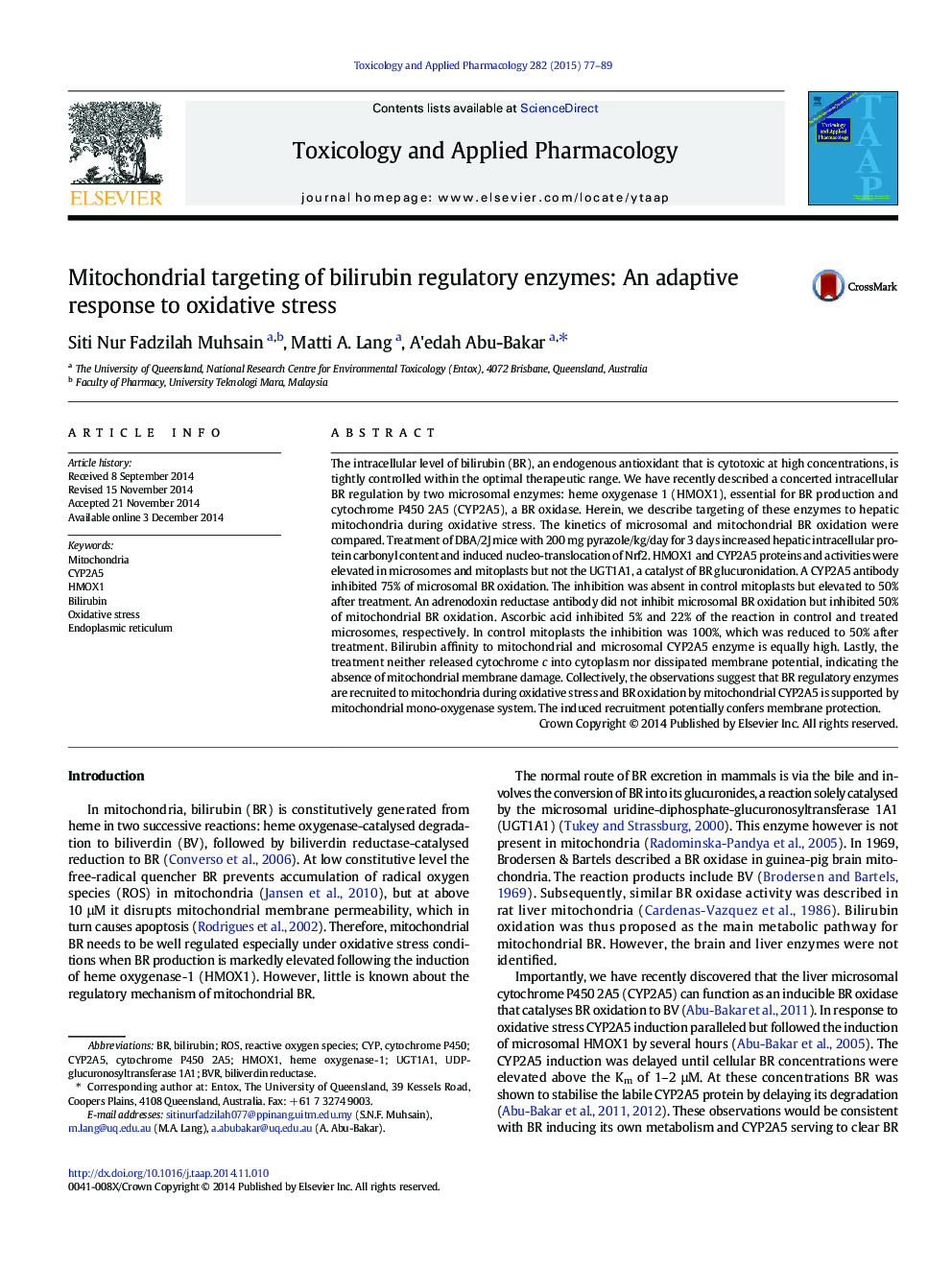| کد مقاله | کد نشریه | سال انتشار | مقاله انگلیسی | نسخه تمام متن |
|---|---|---|---|---|
| 2568493 | 1128459 | 2015 | 13 صفحه PDF | دانلود رایگان |
• Pyrazole induces oxidative stress in the mouse liver.
• Pyrazole-induced oxidative stress induces mitochondrial targeting of key bilirubin regulatory enzymes, HMOX1, BVR and CYP2A5.
• Mitochondrial cytochrome P450 2A5 (CYP2A5) can function as bilirubin oxidase.
• Mitochondrial targeting of the key microsomal enzymes is not associated with mitochondrial membrane disruption.
The intracellular level of bilirubin (BR), an endogenous antioxidant that is cytotoxic at high concentrations, is tightly controlled within the optimal therapeutic range. We have recently described a concerted intracellular BR regulation by two microsomal enzymes: heme oxygenase 1 (HMOX1), essential for BR production and cytochrome P450 2A5 (CYP2A5), a BR oxidase. Herein, we describe targeting of these enzymes to hepatic mitochondria during oxidative stress. The kinetics of microsomal and mitochondrial BR oxidation were compared. Treatment of DBA/2J mice with 200 mg pyrazole/kg/day for 3 days increased hepatic intracellular protein carbonyl content and induced nucleo-translocation of Nrf2. HMOX1 and CYP2A5 proteins and activities were elevated in microsomes and mitoplasts but not the UGT1A1, a catalyst of BR glucuronidation. A CYP2A5 antibody inhibited 75% of microsomal BR oxidation. The inhibition was absent in control mitoplasts but elevated to 50% after treatment. An adrenodoxin reductase antibody did not inhibit microsomal BR oxidation but inhibited 50% of mitochondrial BR oxidation. Ascorbic acid inhibited 5% and 22% of the reaction in control and treated microsomes, respectively. In control mitoplasts the inhibition was 100%, which was reduced to 50% after treatment. Bilirubin affinity to mitochondrial and microsomal CYP2A5 enzyme is equally high. Lastly, the treatment neither released cytochrome c into cytoplasm nor dissipated membrane potential, indicating the absence of mitochondrial membrane damage. Collectively, the observations suggest that BR regulatory enzymes are recruited to mitochondria during oxidative stress and BR oxidation by mitochondrial CYP2A5 is supported by mitochondrial mono-oxygenase system. The induced recruitment potentially confers membrane protection.
Journal: Toxicology and Applied Pharmacology - Volume 282, Issue 1, 1 January 2015, Pages 77–89
